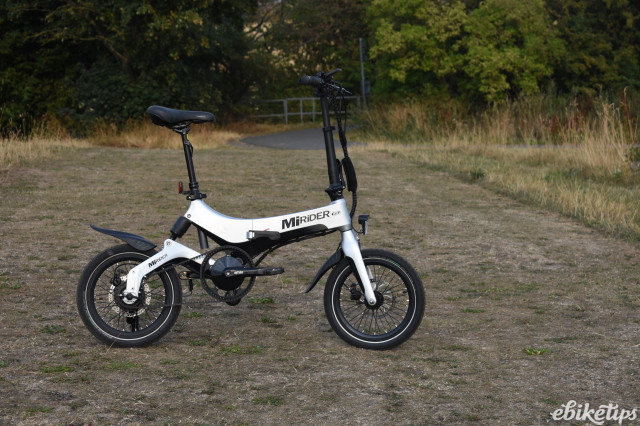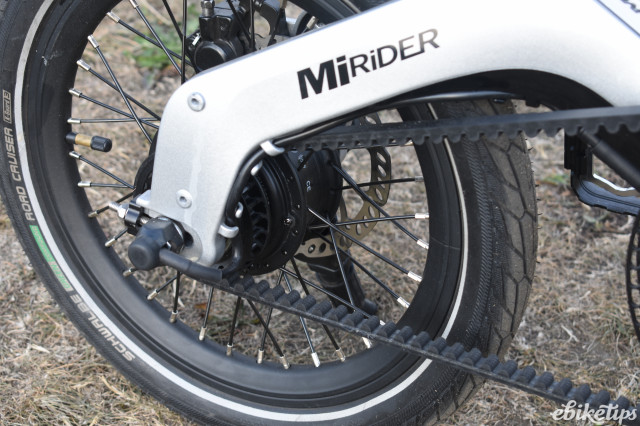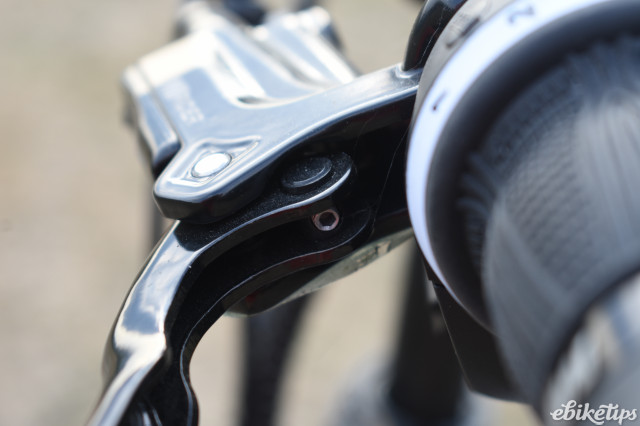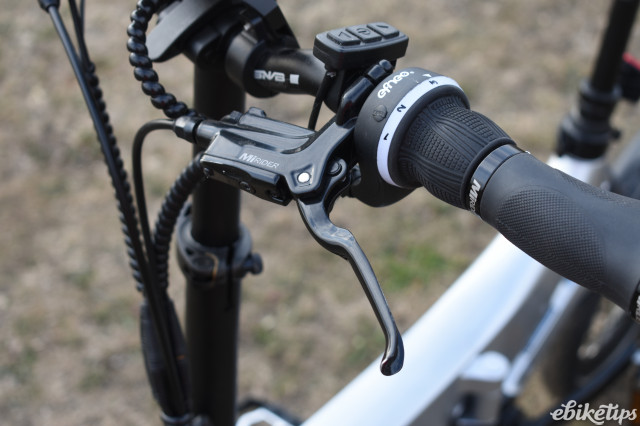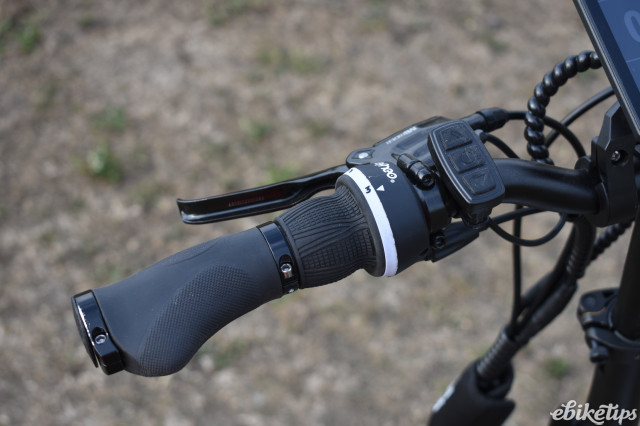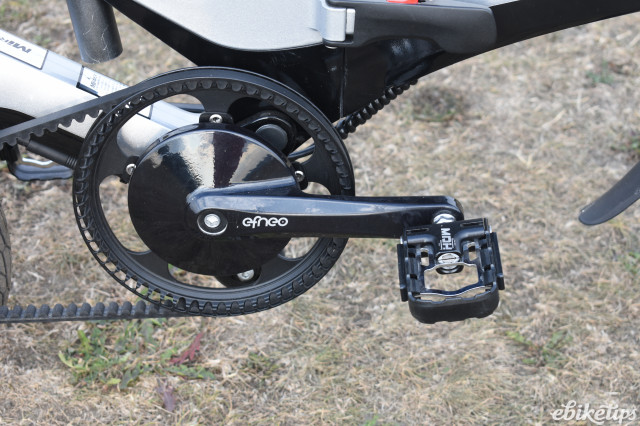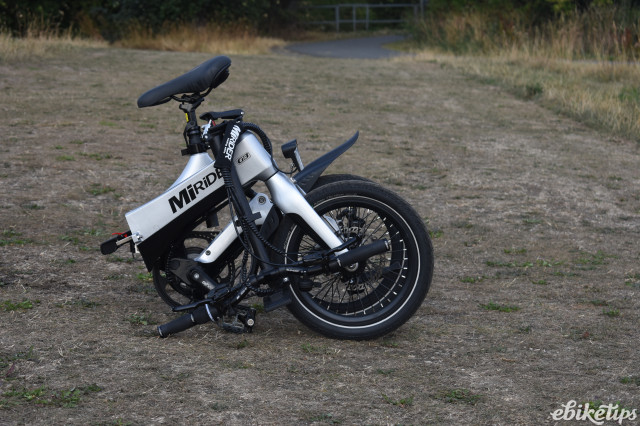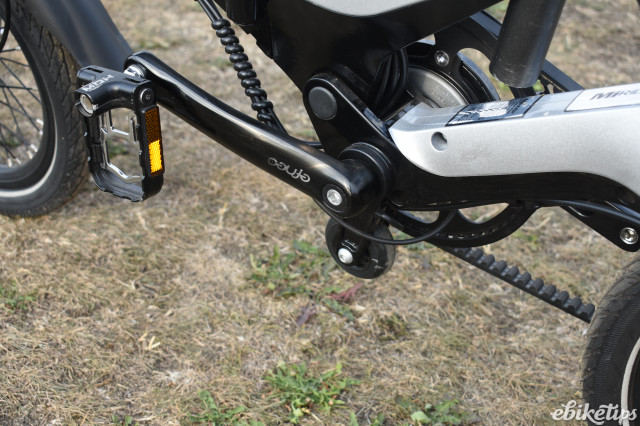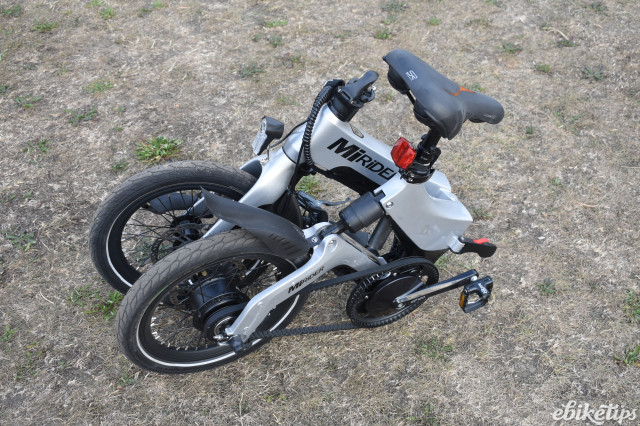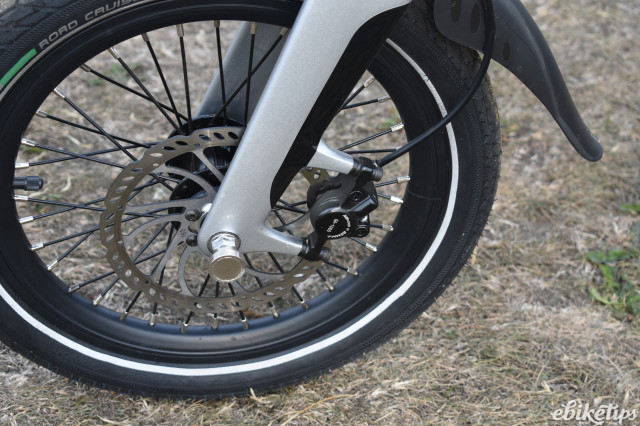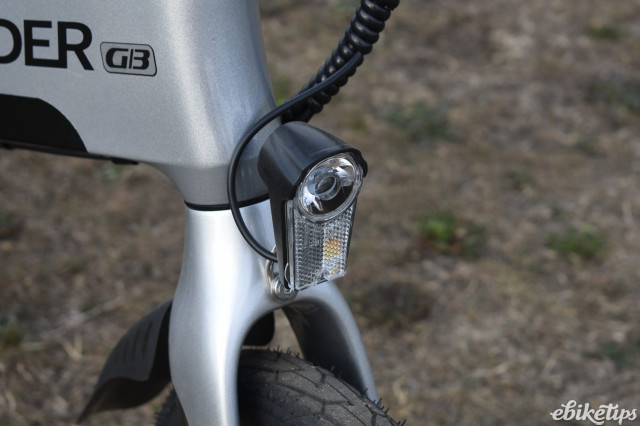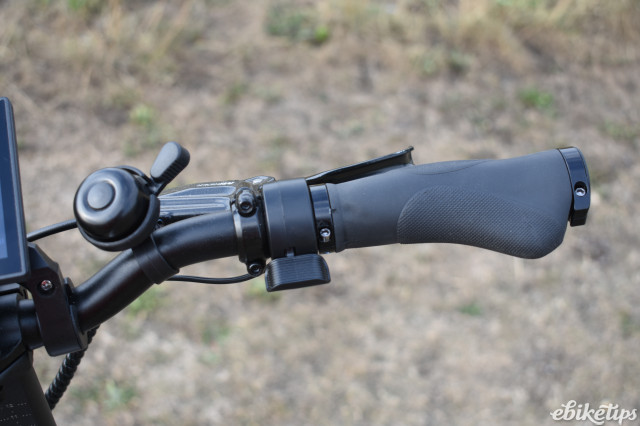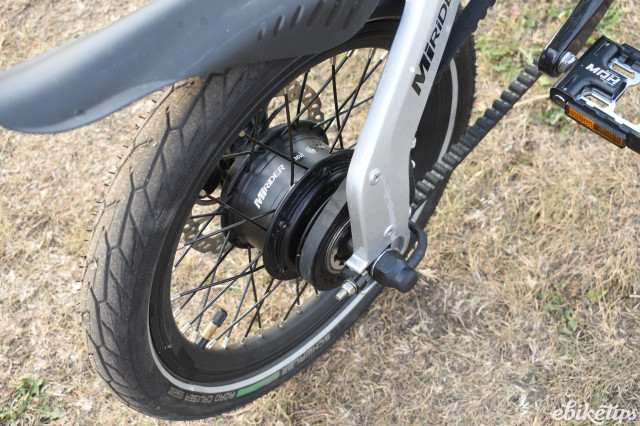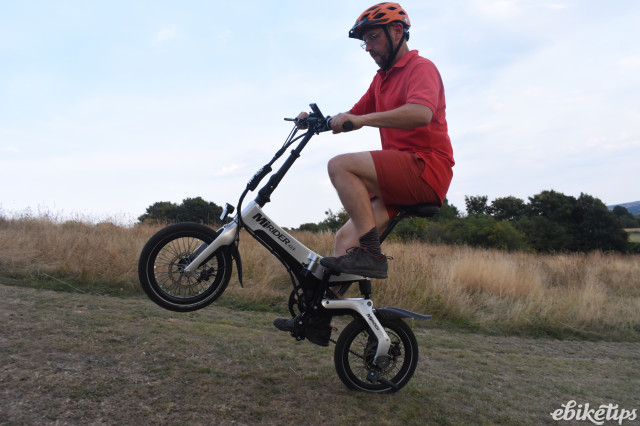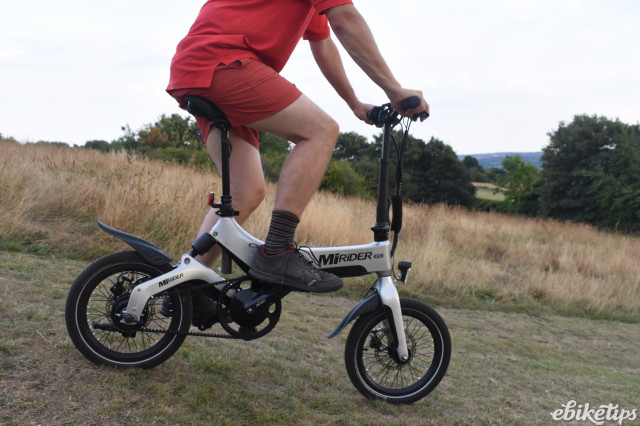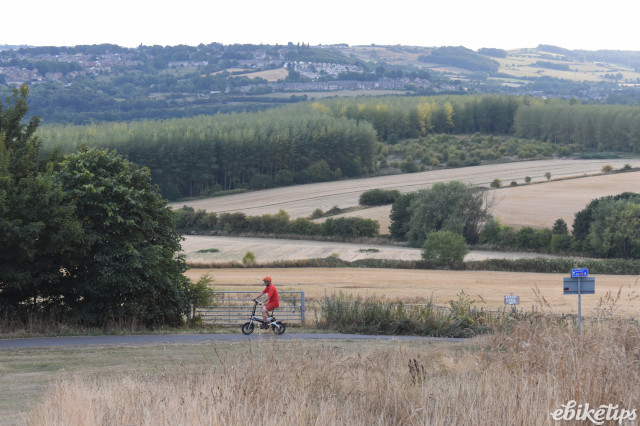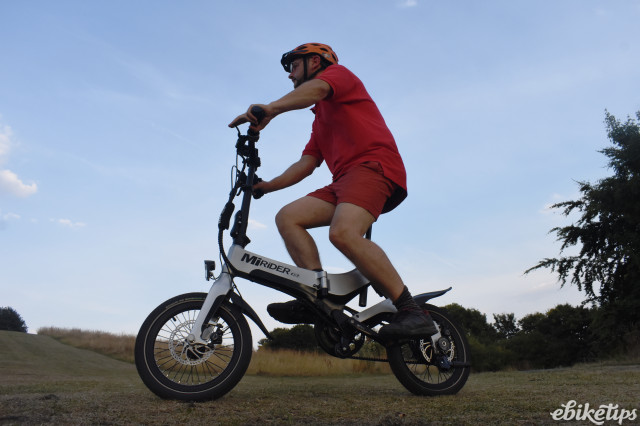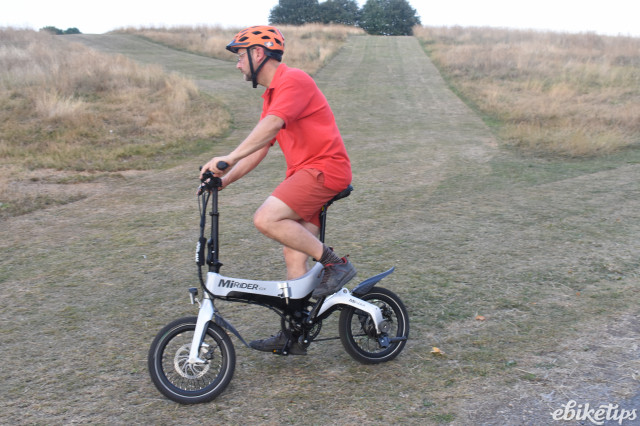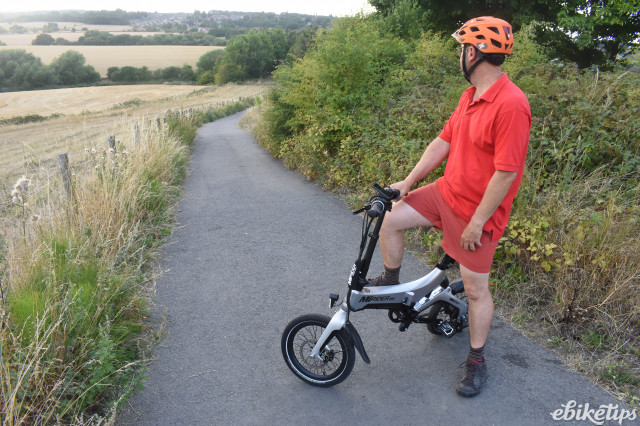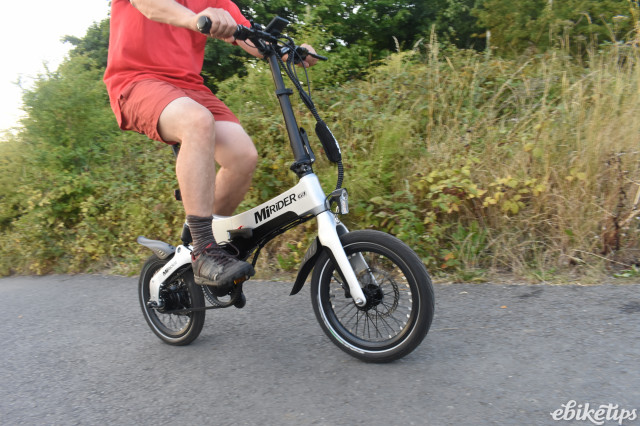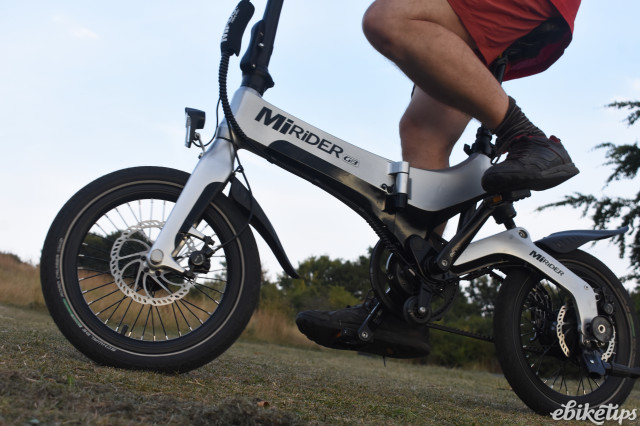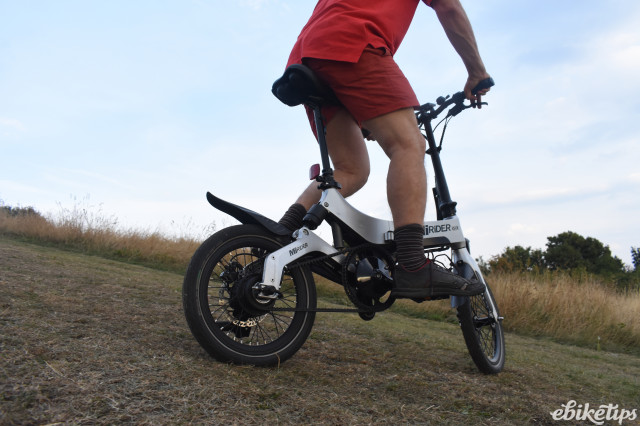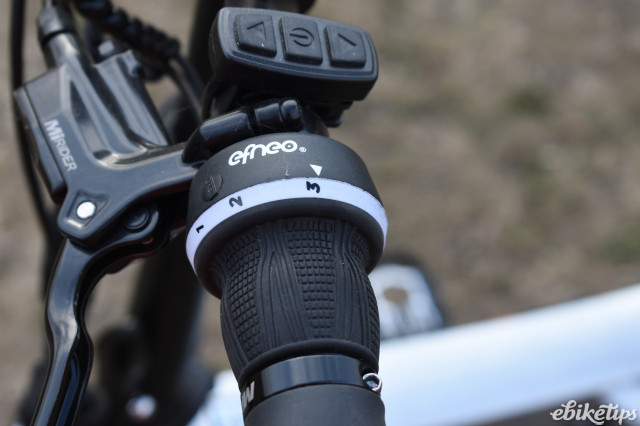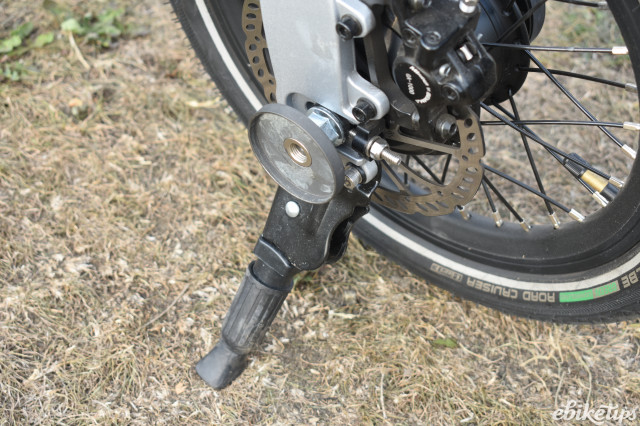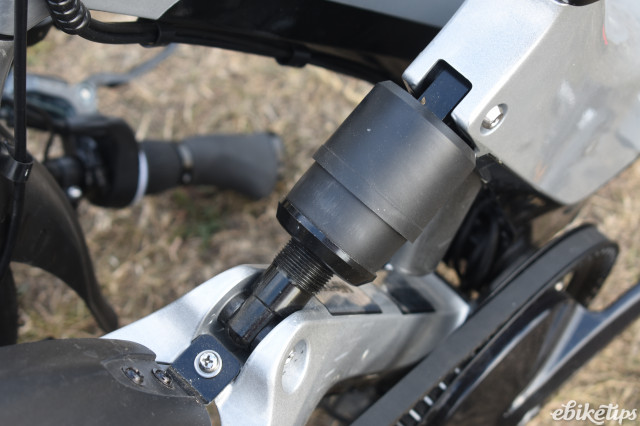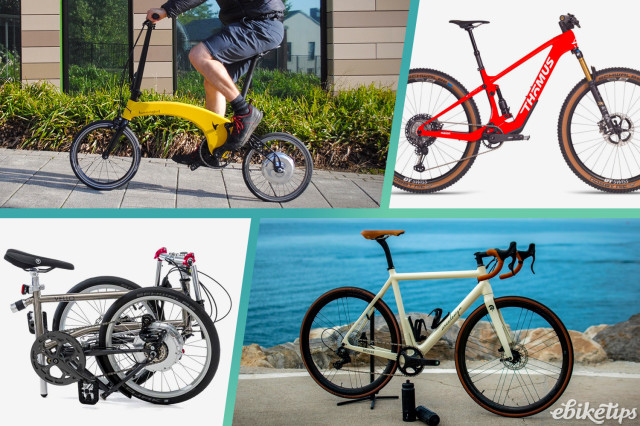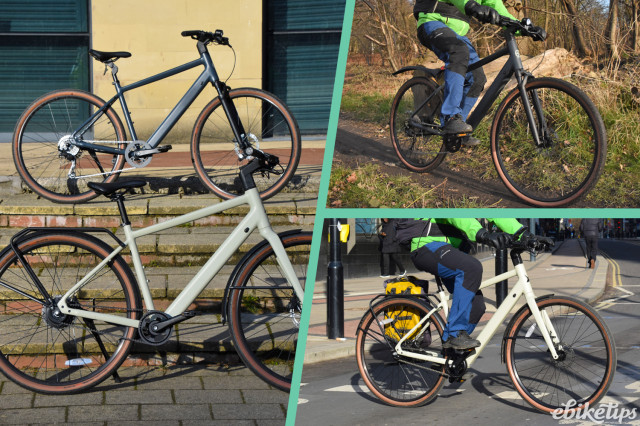Review: MiRiDER One GB3
Overview
- Great hill-climber
- Nippy throttle
- Clean, low maintenance belt drive ideal for a folder
- Not the lightest e-folder available
We've already reviewed the single speed MiRiDER 2021 version and loved it. Now comes the MiRiDER One GB3. It retains the funky-looking single speed fold-in-half style magnesium frame with integrated but removable battery, mid-frame elastomer suspension and adjustable height handlebars and seatpost. However, the GB3 gets three gears and a host of other spec upgrades.
Since our review the original single speed has jumped up in price from £1,395 to £1,595, but of course that's only in line with many other e-bike prices. The GB3 retails at £2,494 which is quite a hike for the addition of gears, belt drive, hydraulic disc brakes and a new display. These are however all quality products and add genuine functionality.
Gearing up and other spec additions
Let's jump in straight away and take a look at that gearing as it's so distinctive but relatively little known. The three speed Efneo GTRO gear unit is housed within the chainwheel body and manages to get a planetary gear setup into a space only around 15mm deep and with a diameter the same as a medium sized chainring - in short, a miraculous piece of engineering.
In terms of operation, it's just like a three-speed hub gear. You have a twist grip with three gear points to click between. Simplicity itself. The rear hub space is taken up by the same cracking little MiRiDER rear hub motor used in the single speed. Adding more gears there would have meant an unsightly derailleur at the back, which would be very low hanging on such a small-wheeled bike and therefore prone to damage.
The biggest bonus of not going down the derailleur path however is that by maintaining a single chain line MiRiDER has been able to fit a belt drive, meaning no oil to get on clothes and no regular maintenance. In design terms at least, this looks like a great solution for a folding e-bike, with the only proviso that - like hub gears - the Efneo adds quite a bit of weight (around 1.4kg) and expense (probably a few hundred quid) to the bike. As ever in the world of bike design, you can't have your cake and eat it.
The Kevlar cDrive belt drive is also new and the more we see of belt drives on e-bikes the more we like them. Although said to be a little less efficient than the good old chain drive, it's hard to detect any extra drag on e-bikes in particular, as the motor assist tends to cancel out any extra 'stiction' from the belt. As noted below, the GB3 actually rides quite nicely without any electric assist at all.
The GB3 also gets a new full colour LCD display; upgraded, lightweight, easy-to-fold pedals; and a redesigned magnet system with a lip on the rear element which helps keep the folded package together.
A wide-ranging ride
The range achieved from the MiRiDER GB3 depended very much on how it was ridden. Over moderately hilly terrain it returned a range in excess of 35 miles from the small 252Wh battery, when ridden mainly in the lower three power levels and without using the throttle to give a power boost up the steeper sections. This meant a decent amount of moderate exercise, but the small Bafang motor certainly took the sting out of the climbs and on the flat and downhill it proved a very nice bike to ride with the power turned off. At around 35 miles and with the battery voltage showing around 30 volts on the display, it would cut out in higher power levels, but there was still enough juice to complete the three miles back to home in assist level 1. Initially the rider felt he was bobbing up and down a little whilst riding hard, but screwing down the elastomer block stiffened it up considerably.
It's possible to get such impressively economical figures as even at the lowest assistance level the power keeps on coming right up to the assist cut-out limit of around 16mph. This means you can ride it with just a small amount of assist if conditions are fairly benign, rather than having to dial up the power levels to get more speed. So, despite its appearance as a fun and funky folder, the GB3 is a very nice bike to ride if you want a workout too, with just enough assistance to make the exercise a pleasure rather than a pain. In this respect it's a bit like the lightweight Mahle system used by many electric road and hybrid bikes.
It's worth stressing that other cruder systems (often found on more 'budget' e-bikes) mean level 1 switches off at a low speed whilst assistance at 15mph is at the full voltage allowed by the controller. The end result in that situation is a rather wasteful system. This is part of the reason you are paying more for a bike like a MiRiDER than for the budget folders out there that may look similar but contain cheaper off-the-shelf electronic control systems. The subtleties of the MiRiDER control system mean it's not only an efficient e-bike if ridden in the lower power levels but a very bike-like one too, where the electric assist blends nicely with human power.
The gears also help you get the most out of the system. In third you can push the GB3 along unassisted at about 20mph; second is fine for most hills; and first means the bike can climb just about any hill put in front of it. (Just be careful using throttle power and pedalling hard in first gear or you might find yourself in unexpected wheelie mode...)
Times up our extended hill climb were average - although it's based on a long list including many powerful mid-drives. Compared to most other hub drives, the GB3 was ahead of the pack and ahead of just about all other small hub motors by a few seconds with the exception of the remarkable Gocycle.
On our short ultra-steep climb it made it easily to the top in reasonable time and would have been quicker were it not for the rider guarding against wheelie syndrome and pedalling evenly and quite gently. In both cases the full throttle was used, which meant there was only mild physical exertion involved. All in all a very impressive result for such a small motor.
The Gemma hydraulic disc brakes are smooth and powerful and whilst you still have to be a little careful how hard you apply the front brake in particular, they are superior in stopping power to just about all other brakes we've tried on 16" wheeled e-bikes. Brompton and Flit take note!
On display
The all new full colour LCD display is crisp and clear and pretty legible even in sunlight. It doesn't overwhelm you with information but provides what this rider found to be very helpful standard metrics like average speed, max speed etc.
There is the usual four-bar battery icon, but far more useful is the battery voltage display. Fully charged it starts out at just under 42V and declines to around 30V at which point the software cuts power when the load is too great for the voltage. Not only does it act as an accurate battery gauge in itself, it also lets you see how the battery is behaving under load and if there is any drop off in performance.
Another useful data field is the one showing watts of motor power being delivered. Once you get used to what power the motor produces in different levels it lets you keep a check on motor behaviour. In the lower two levels you might expect to breeze over gentle gradients only using 50 or 60 watts of motor power at most. Hit steeper hills and in the higher power levels the motor can sustain well above 480 watts. Like the battery voltage display, it can also act as a useful diagnostic tool to tell you if the motor is not producing the power it usually does. The huge variety in motor output possible, from just a few watts to nearly half a kilowatt, show how it's possible to get wildly differing ranges from the 252Wh battery, depending on how you choose to apply the power. It's an impressive level of control and feedback from the motor system that you don't get on all e-bikes.
Our only real quibble was the fact the display is non-removable. It's a useful theft deterrent to be able to remove it and in the GB3's case it's positioned to make quick adjustment of the handlebars a bit awkward too. Its position could also mean it's vulnerable to damage if you want to turn the bike upside down onto seat and handlebars for maintenance.
There's an inbuilt USB A connector in the side of the display, most helpful for keeping a range of devices topped up. We measured the output at 0.65amps which is certainly better than the power delivered by some USB display ports on budget bikes and certainly a useful thing to have.
New price bracket, stiff competition
Although there has been a notable price jump up from the single speed MiRiDER to the GB3, that's accounted for at least in part by extra components that don't come cheap but that make a lot sense on an electric folder, like the chainwheel enclosed gearing, belt drive and hydraulic disc brakes. Not only do these features look good on paper, but they worked well in our real world test.
The extra gears (and money) really make it a natural competitor to the Brompton Electric which we reviewed in its six-speed, non-titanium form back in 2019. Things have moved on since then and it now comes in the newly introduced C line and P line variants spanning a price range of £2,800 to £3,775.
The Brompton's legendary compact fold and its quick remove battery system mean it's still the e-folder of choice if you are regualrly getting on and off trains and need the most portable e-bike possible - though the FLIT-16 certainly gives it a run for its money. Like the MiRiDER, the Flit currently retails at just under £2,500.
There are fairly lightweight 20" wheeled options out there too though, and the GB3's 77 x 43 x 68 cm folded size approaches some of these, while its 19.1kg weight exceeds them all. The Vello is a very neat and compact folded package at 81 x 37 x 57cm but it lacks the wonderful three-speed gearing of the GB3. The Gocycle G4 is probably the best all round ride of the e-folders we have tried, but at 83 x 39 x 75cm is a considerably bigger folded package than the GB3. The seven-speed Carbo Model S claims to weigh 15.3kg and fold to 80cm x 60cm x 33cm but ebiketips hasn't yet tested one. It matches the GB3 on price.
In summary, the GB3 undercuts a lot of the competition price wise, and where it doesn't it has many plus points over the competition, be it super effective hydraulic braking or, perhaps best of all, that instant throttle power which goes a long way towards making it one the most fun e-bikes to ride. The GB's upgrades also make it a much more grown up e-bike and capable of so much more than the original MiRiDER.
It would be nice to see it lose some weight, but that would probably require a major reworking of that big, chunky magnesium frame, perhaps even using a different material. E-folders that are considerably lighter are often at least a few hundred pounds more (the ultra light Hummingbird electric is currently £4,495) and even when they are not (e.g. Flit) they lack some standout feature that the GB3 does have. Add on the GB3's two-year guarantee and the UK factory and dealer network and it's clear MiRiDER have come up with another winner.
1 comments
No picture of it folded?
